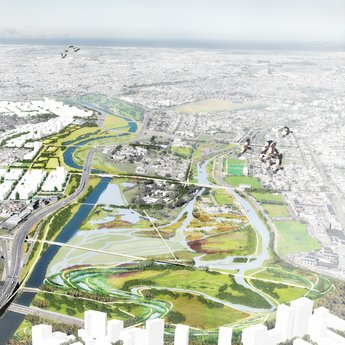Circulation
The key of the new system is the supply channel situated on the edge of the park. This operates as a ‘pump’ and discharges water from the big lake into the canals and waterways of the urban areas. In this way the canal provides for circulation and water exchange and pollution is kept to a minimum.
Water storage
The lake stores rainwater from the new district and serves as a storage basin for water during wet seasons, to be used as a source for blue structures. Wadis collect and temporarily store the rainwater from buildings and roads.
The existing ditches and waterways in the plan area discharge the water into the lake. In order to store sufficient water for dry periods, the water surface covers a major part of the new district: 13% of the new urban areas will be developed as open water areas. The lake in the park will be part of this area. Also in an exceptionally wet year (once every 30 years) the water system will have sufficient capacity to store water!













